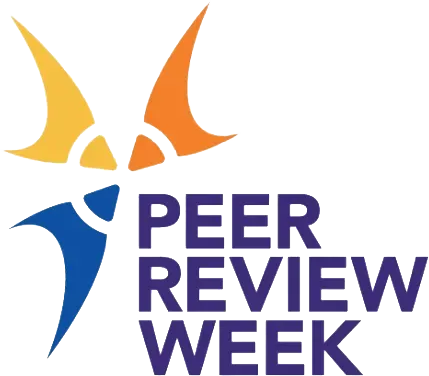Conversations during Peer Review Week 2018: Good reads

Peer Review Week is one of the most exciting events for the scholarly community around the world. We hope you have been following Editage Insights’ Peer Review 2018 series where we have shared several interesting insights from industry professionals about this year’s theme: Diversity and inclusion. This year’s event is coming to a close and we wanted to capture some of the most interesting discussions around the theme of this year’s Peer Review Week. This post curates some interesting perceptions and opinions shared by industry professionals. Happy reading!
1. How to review in a language you are not fluent in: We all know that it is not easy to review a research paper; more so if the review needs to be done in a language other than the one you are most comfortable with. In keeping with this year’s theme of Peer Review Week, Methods.blog took the opportunity to ask the associate editors of Methods in Ecology and Evolution Associate to give some advice to peer reviewers who have to review in English despite it not being their first language. They shared some helpful tips such as focusing on the science rather than spelling and grammatical errors; beginning with reviewing the title, abstract, figures and tables; and breaking down the manuscript into smaller segregations. The editors also suggest writing down your own summary of your understanding of the topic so that it helps you focus on your opinions as well as making sure your spell checker and auto-complete functions are set to English. The advice they share is useful for all reviewers.
2. The need for gender diversity in peer review: In this excellent post, PLOS ONE Section Editor Gemma Derrick shares her perspective on gender diversity in the peer review process. She talks about how there is “great faith” in peer review in the academic world and that the main objective of peer review is to make a research paper “as strong as it can be prior to publication.” Discussing the reasons behind the underrepresentation of women in the peer review process, she states that “women still take on the majority of childcare and/or household management responsibilities,” which may inhibit them from taking on additional responsibilities. When asked for tips on how an editor can ensure gender balance while handling the review process she said, “Try to involve women as reviewers as much as possible and recognise that their expertise is not diminished by them needing an extra couple of days to complete a review. This will ensure that the manuscript under review benefits from the insights of the very best experts, regardless of their gender.”
3. Insights on peer review by an experienced peer reviewer: Publons interviewed their last year’s inaugural Sentinel Award winner, Irene Hames who has been involved in scholarly publishing for nearly 40 years. In this interview, discussing the gender diversity scenario in today’s world of peer review, Irene said, “Ideally, the composition of the global reviewer and editor pools should reflect that of the global research community and research disciplines, but this isn’t the case. On the positive side, many people and organisations are looking at ways to embrace diversity and increase inclusion.” She also shared tips for early career researchers who want to become peer reviewers, recommending co-reviewing as the starting point. She stated that many journals encourage this as it is the traditional way to learn how to review. Another important aspect Irene touched upon is that: “If it’s been done well, peer review helps us know what we can trust and what we need to treat with caution. But, unfortunately, the quality of peer review is very variable, and we’re seeing a worrying number of real failures of peer review. A lot of innovation and experimentation is underway to try to find ways to improve things.”
4. Making peer review more inclusive: Jon Tennant, who published The State of the Art of Peer Review, shared his thoughts in this interview on what is happening with recent waves of innovation in peer review and answered questions about the problems the current state of peer review has with diversity and inclusion. Speaking about the main problem with peer review, Tennant said, “[…] it’s the overall secrecy, and the problems and questions this creates.” He added that “we are seeing increased cross-stakeholder discussions, with more questions being asked and novel solutions and ideas popping up all the time,” which he views as positive developments. Sharing his opinion about the theme of Peer Review Week this year, he stated: “we have insurmountable diversity and inclusion issues that perpetuate academia and impact virtually every part of research from the granting process all the way to research evaluation.” “We should make sure that we aren’t just inviting people for the sake of representation, but with a full awareness of what that representation brings, and how to foster the environment that promotes and sustains this,” he added.
5. The need to include researchers from emerging nations in peer review: The Global State of Peer Review report by Publons, an online platform that researchers can use to track their peer review contributions, took into account the responses of 11,800 researchers around the world and found that there is an increase in “reviewer fatigue.” This condition can probably be attributed to the fact that 10% of reviewers are responsible for 50% of peer reviews. The report also found that journal editors are finding it increasingly difficult to find reviewers. Interestingly, the report also found that the U.S., the U.K., and Japan write about 2% of the reviews as compared to 0.6% from countries such as China, India, and Brazil. Since editors are finding it difficult to find reviewers and young researchers do not often get approached, according to Andrew Preston who is Managing director of Publons, the study’s key takeaway is that “scientists in emerging nations are keen to do peer review, but do not receive as many requests as their colleagues.”
We hope you enjoyed reading this post. Also, browse through our previous Scholarly Communications Good Reads collections where we have featured more such interesting discussions from the scholarly publishing world.
And if you’d like to stay tuned to important happenings in the journal publishing industry, visit our Industry News section.





